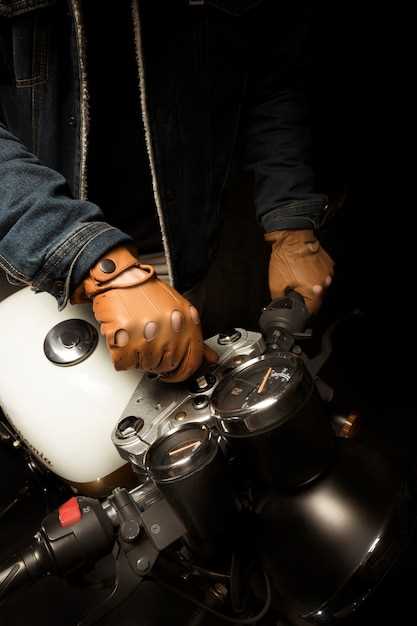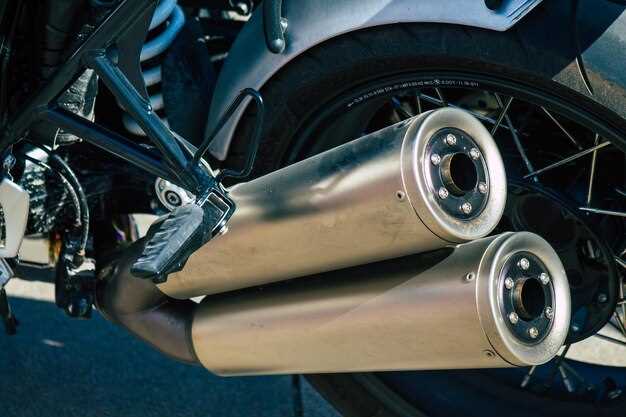
When it comes to enhancing your motorcycle’s performance, one of the most effective modifications you can make is upgrading the exhaust system. A high-quality exhaust not only improves engine efficiency but also elevates the overall riding experience. By optimizing the exhaust flow, you can achieve better power output, improved throttle response, and a more aggressive sound that reflects your bike’s true potential.
Investing in an aftermarket exhaust can be a game-changer for motorcycle enthusiasts who demand more from their machines. Whether you own a cruiser, sportbike, or adventure bike, the right upgrade can reduce back pressure and allow for better gas flow, leading to increased horsepower and torque. This is especially crucial for riders looking to maximize their bike’s capabilities on the road or track.
In addition to performance gains, a new exhaust system can also significantly reduce weight. Stock exhausts are often heavier than their aftermarket counterparts, which means that by upgrading, you’re not only enhancing performance but also improving handling and agility. A lighter bike translates to a more responsive ride, allowing you to carve through corners with ease.
Ultimately, upgrading your motorcycle exhaust is about achieving the perfect balance between power, sound, and aesthetics. A well-chosen exhaust system can amplify your motorcycle’s character while providing a noticeable boost in performance that will enhance your riding experience every time you hit the road.
Choosing the Right Exhaust Type for Your Motorcycle
When considering an upgrade for your motorcycle’s exhaust system, understanding the different types available is crucial. Each exhaust type offers distinct benefits and can significantly impact your bike’s performance, sound, and aesthetics.
One popular choice is the slip-on exhaust. This option involves replacing just the muffler portion of the exhaust system, making it a less invasive and more affordable upgrade. Slip-ons improve exhaust flow, enhance sound, and are relatively easy to install, making them a favored choice for many riders looking for a quick performance boost.
Full exhaust systems, on the other hand, replace the entire system, including the header pipes. This type of upgrade provides the most significant performance gains, as it optimizes the entire exhaust flow from engine to tailpipe. A full system can result in improved horsepower and torque while often providing a more aggressive sound. However, it typically comes at a higher cost and may require more installation effort.
Another option is the aftermarket header, which can be added to your stock exhaust. Aftermarket headers are designed to enhance performance by improving gas flow and reducing back pressure. This upgrade can be particularly beneficial for high-performance motorcycles, where every bit of power counts.
When choosing an exhaust type, consider your primary goals: are you seeking increased performance, a louder sound, or a combination of both? Additionally, ensure compatibility with your motorcycle’s make and model, as not all exhaust systems fit every bike. Doing thorough research and consulting with experts can guide you to make the right choice that aligns with your riding style and performance expectations.
Installation Tips for a Seamless Upgrade Process

Upgrading your motorcycle exhaust can significantly enhance performance, but proper installation is crucial for achieving the desired results. Follow these tips to ensure a smooth upgrade process.
First, gather all necessary tools and materials before starting the installation. This includes sockets, wrenches, a torque wrench, and any specific hardware that may come with your new exhaust system. Having everything on hand will minimize interruptions during the installation.
Next, read the manufacturer’s instructions thoroughly. Each exhaust system is different, and following the specific guidelines will help you avoid mistakes. Pay close attention to the orientation of parts and any torque specifications provided.
Before removing the old exhaust, make sure the motorcycle is cool to the touch and securely positioned on a stable surface or a bike stand. Remove any components that could obstruct access to the exhaust system, such as heat shields or brackets.
When detaching the old exhaust, use penetrating oil on stubborn bolts to facilitate easier removal. Handle the old unit with care, as dropping it can cause damage or injury. Once it’s removed, inspect the connections and ensure there is no rust or corrosion that could affect the new installation.
As you install the new exhaust, start by loosely securing all parts. This will allow for adjustments before tightening everything down. Ensure that gaskets are properly placed to prevent leaks. Once aligned, use a torque wrench to tighten bolts to the specified settings, maintaining even pressure across the assembly.
After installation, double-check all connections and ensure that there is no interference with other motorcycle components. Start the engine and listen for any unusual sounds, which could indicate an improper seal or installation issue.
Finally, take your motorcycle for a short ride to test the upgrade. This will help you confirm that the performance is enhanced and that the exhaust is functioning as intended. Regularly monitor the system for leaks or other issues to ensure the longevity of your upgrade.
Tuning Your Motorcycle After Exhaust Replacement

Once you have completed your exhaust upgrade, it is essential to tune your motorcycle to fully realize the performance benefits of the new system. The stock tuning settings may not align with the changes introduced by a new exhaust, potentially leading to inefficiencies or reduced performance.
The first step in tuning is to assess the air-fuel mixture. An upgraded exhaust often allows for increased airflow, which necessitates adjustments in fuel delivery to maintain optimal performance. This can be done using a fuel management system or an ECU remap, which will increase the fuel to match the refined airflow characteristics.
Next, consider adjusting ignition timing. A new exhaust can alter the engine’s dynamics, and retuning the timing can improve throttle response and overall power output. Using a timing advance can help maximize performance by ensuring the combustion process occurs at the right moment within the cylinder.
It is also important to check for any errors in the sensor readings after the exhaust system replacement. Sometimes, the new exhaust can affect the readings from oxygen and temperature sensors. Ensuring that the sensors are calibrated correctly allows the engine management system to make necessary adjustments, enhancing performance and fuel efficiency.
Finally, dyno tuning is highly recommended after an exhaust upgrade. This process involves running the motorcycle on a dynamometer, which collects data on power and torque output. The information gathered helps in fine-tuning the motorcycle’s setup, ensuring that each element works in harmony to achieve the best performance possible. Investing time in proper tuning will maximize the benefits of your exhaust upgrade, providing a noticeable difference in your riding experience.




